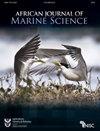南非东部已开发和未开发潮间带珊瑚礁贻贝覆盖、密度和大小的趋势
IF 1.4
4区 生物学
Q3 MARINE & FRESHWATER BIOLOGY
引用次数: 0
摘要
棕贻贝Perna Perna是南非东海岸主要的本土贻贝,在那里被休闲和自给自足的渔民捕捞。城市附近的高捕捞压力导致鱼类数量下降,因此在1998年关闭了一些珊瑚礁。我们估计了27年来(1993-2019年)在固定样带的开发和未开发地点贻贝种群动态的趋势。从每年的许可证销售和现有的渔获量统计数据推断休闲捕鱼努力量的趋势。在高捕捞量的情况下,在考虑的四个地点中,有三个地点的贻贝覆盖和密度的短期趋势与捕捞量呈负相关,而第四个地点则受到附近河口间歇性破口的影响。贻贝的大小与种群密度呈负相关。长期捕捞禁令的影响在一定程度上被整个休闲渔业捕捞量的急剧下降所掩盖。覆盖和密度的季节和年际格局在站点之间部分同步,表明环境强迫在相似的时间尺度上。长期数据集在解开捕捞和环境因素对贻贝种群动态的相对影响方面是无价的,应该继续作为评估未来气候对岩岸生物群的影响的基线。本文章由计算机程序翻译,如有差异,请以英文原文为准。
Trends in mussel cover, density and size at exploited and unexploited intertidal reefs in eastern South Africa
The brown mussel Perna perna is the dominant indigenous mussel along the east coast of South Africa, where it is harvested by recreational and subsistence fishers. High fishing pressure near urban areas led to declining abundance and consequently to the closure of some reefs to fishing in 1998. We estimated trends in mussel population dynamics at exploited and unexploited sites, along fixed transects, over a 27-year period (1993–2019). Trends in recreational fishing effort were inferred from yearly permit sales and existing catch statistics. At high levels of fishing effort, short-term trends in mussel cover and densities were inversely related to fishing effort at three of the four sites considered, while the fourth site was influenced by intermittent breaching of a nearby estuary. Mussel size was inversely related to population densities. The effects of longer-term harvesting bans were partially obscured by sharp declines in fishing effort across the entire recreational fishery. Seasonal and interannual patterns in cover and density were partially synchronised among sites, indicating environmental forcing at similar time-scales. The long-term dataset was invaluable in disentangling the relative effects of fishing and environmental factors on mussel population dynamics and should be continued as a baseline for assessing future climate-induced effects on rocky-shore biota.
求助全文
通过发布文献求助,成功后即可免费获取论文全文。
去求助
来源期刊

African Journal of Marine Science
生物-海洋与淡水生物学
CiteScore
2.60
自引率
16.70%
发文量
17
审稿时长
6-12 weeks
期刊介绍:
The African (formerly South African) Journal of Marine Science provides an international forum for the publication of original scientific contributions or critical reviews, involving oceanic, shelf or estuarine waters, inclusive of oceanography, studies of organisms and their habitats, and aquaculture. Papers on the conservation and management of living resources, relevant social science and governance, or new techniques, are all welcomed, as are those that integrate different disciplines. Priority will be given to rigorous, question-driven research, rather than descriptive research. Contributions from African waters, including the Southern Ocean, are particularly encouraged, although not to the exclusion of those from elsewhere that have relevance to the African context. Submissions may take the form of a paper or a short communication. The journal aims to achieve a balanced representation of subject areas but also publishes proceedings of symposia in dedicated issues, as well as guest-edited suites on thematic topics in regular issues.
 求助内容:
求助内容: 应助结果提醒方式:
应助结果提醒方式:


